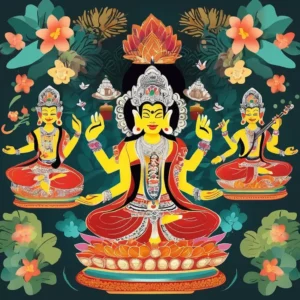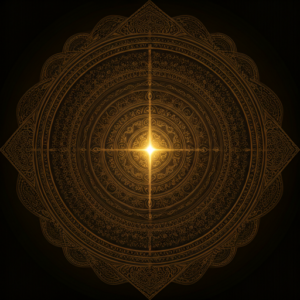 Balinese traditional healing stands as a beacon of ancient wisdom in the realm of wellness. Rooted in centuries-old traditions, this holistic approach to healing embodies a harmonious blend of spirituality, culture, and natural remedies. In the heart of Bali, amidst lush landscapes and vibrant culture, traditional healers, known as Balian, continue to practice their art, offering remedies for physical ailments, spiritual imbalances, and emotional distress. This essay explores the intricate tapestry of Balinese traditional healing, delving into its origins, practices, and profound impact on individual and communal well-being.
Balinese traditional healing stands as a beacon of ancient wisdom in the realm of wellness. Rooted in centuries-old traditions, this holistic approach to healing embodies a harmonious blend of spirituality, culture, and natural remedies. In the heart of Bali, amidst lush landscapes and vibrant culture, traditional healers, known as Balian, continue to practice their art, offering remedies for physical ailments, spiritual imbalances, and emotional distress. This essay explores the intricate tapestry of Balinese traditional healing, delving into its origins, practices, and profound impact on individual and communal well-being.
Origins of Balinese Traditional Healing
Balinese traditional healing traces its origins to the ancient animistic beliefs of the island’s indigenous people. Centuries ago, Balinese society was deeply rooted in a spiritual worldview that acknowledged the interconnectedness of humans, nature, and the divine. Healing practices were intertwined with rituals, ceremonies, and offerings to appease spirits and restore balance to the individual and community.
One of the foundational concepts of Balinese traditional healing is Tri Hita Karana, which emphasizes harmony with three realms: human, nature, and the divine. This philosophical framework underpins healing practices, guiding healers to address not only physical symptoms but also spiritual and emotional imbalances. Thus, healing in Bali is viewed as a holistic endeavor that seeks to align the individual with the greater cosmic order.
Practices and Techniques:
Balinese traditional healing encompasses a diverse array of practices and techniques, ranging from herbal remedies to energy healing and spiritual rituals. At the core of these practices is the belief in the life force, or „prana,“ which flows through all living beings. Imbalances in prana are believed to manifest as illness or disharmony, prompting healers to restore equilibrium through various means.
Herbal medicine plays a central role in Balinese healing, with a rich pharmacopeia of plants and herbs used to treat a wide range of ailments. Healers, often possessing extensive knowledge passed down through generations, carefully select and prepare remedies tailored to each individual’s needs. From traditional Jamu tonics to medicinal baths infused with herbs and flowers, Balinese herbal medicine offers a potent blend of nature’s healing bounty.
In addition to herbal remedies, energy healing techniques such as „Prana Nadi“ and „Laying on of Hands“ are employed to clear blockages and rebalance the body’s energy centers. Healers, attuned to subtle energy flows, work to remove stagnant energy and channel healing vibrations to the recipient. These practices reflect the profound understanding of the interconnectedness of mind, body, and spirit that permeates Balinese traditional healing.
Spiritual rituals and ceremonies also form an integral part of the healing process in Bali. From purification rituals to soul retrievals and blessings, these ceremonies aim to cleanse, protect, and empower the individual on a spiritual level. By invoking the aid of benevolent spirits and deities, healers create a sacred space for healing to occur, transcending the physical realm and addressing the deeper spiritual roots of illness.
Impact on Wellness:
The art of Balinese traditional healing extends far beyond the alleviation of physical symptoms; it encompasses a holistic approach to wellness that nourishes the body, mind, and soul. By addressing the underlying causes of illness and imbalance, Balinese healing promotes long-term well-being and vitality.
One of the key benefits of Balinese traditional healing is its emphasis on prevention and proactive health maintenance. Rather than waiting for illness to manifest, individuals seek out healers for regular check-ups and spiritual consultations to ensure their well-being is in harmony with the cosmic order. This proactive approach to health care fosters a deep sense of empowerment and self-awareness, empowering individuals to take an active role in their own healing journey.
Moreover, Balinese traditional healing fosters a sense of community and interconnectedness, weaving individuals into the fabric of communal life. Healing ceremonies and rituals often involve the participation of family members and the wider community, strengthening social bonds and reinforcing a sense of belonging. In this way, healing becomes not just an individual endeavor but a collective expression of shared values and cultural heritage.
Conclusion:
Balinese traditional healing stands as a testament to the enduring wisdom of ancient cultures and the profound interconnectedness of humanity with the natural world. Rooted in centuries-old traditions and guided by spiritual principles, Balinese healers continue to offer remedies for physical ailments, spiritual imbalances, and emotional distress, embodying the art of wellness in its purest form. As we navigate an increasingly complex and fragmented world, the timeless wisdom of Balinese healing serves as a beacon of hope and inspiration, reminding us of the healing power that resides within each of us and the interconnected web of life that sustains us all.





